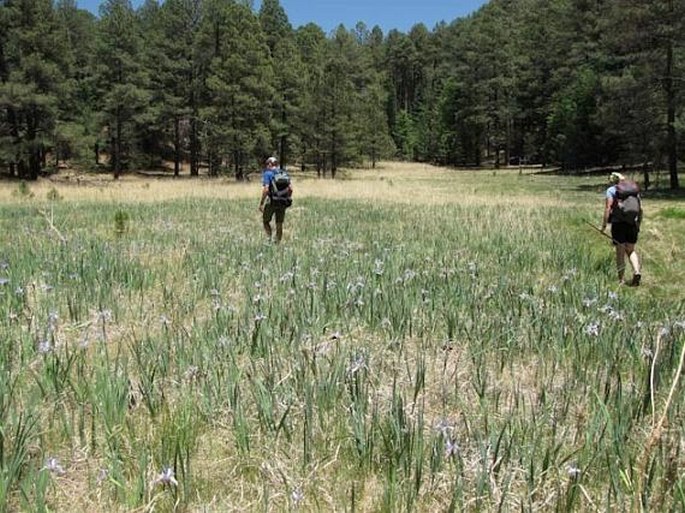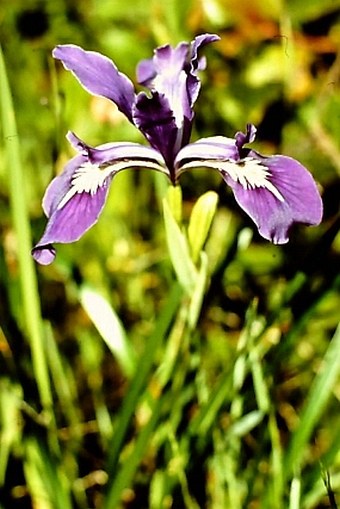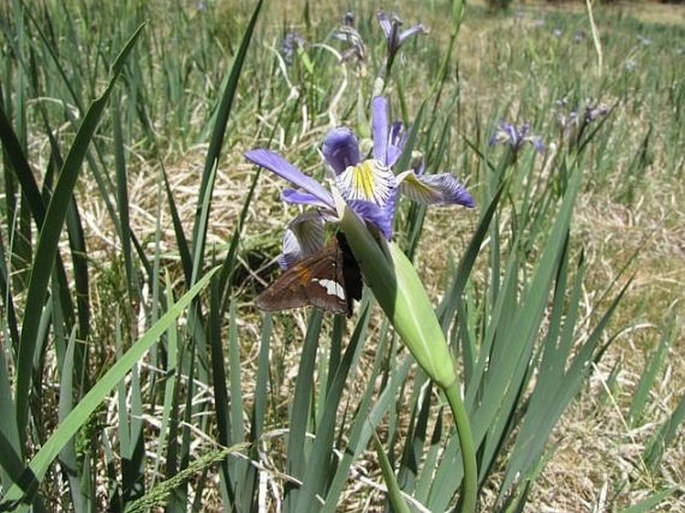Syn.: Iris arizonica Dykes, Iris longipetala var. montana Baker, Iris montana Nutt. ex Dykes, Iris pariensis S. L. Welsh, Iris pelogonus Goodd., Iris tolmieana Herb., Limniris missouriensis (Nutt.) Rodion.
Family: Iridaceae Juss.

Distribution: Species of the west of North America. Missouriensis is a little misleading, although the plant can be found on the upper stream of Missouri but it reaches to the north, to southern Alberta and British Columbia and then southward along Rocky Mountains to California, Arizona and New Mexico. Absent in the prairies of river Missouri.
Ecology: Found in a wide range of ecological conditions, from coast of California to high mountains of Montana and Wyoming. Grows in wet, later drying meadows, along streams, ditches, in elevations from sea level to 3000 m. Blooms from May to July.

Description: Perennial herb with a thick rhizome. Stem erect, simple or somewhat branched, 25–60 cm tall, hairless. Leaves are sword-like to linear, 45–60 cm long and only 3–12 mm wide, grey-green. Flowers 1–4, pale to deep blue, 6–7 cm across, terminal, spathes lanceolate to ovoid, outer ones 3.5–4 cm long, inner ones 5.5–7 cm long, outer perianth segments 3, curved backwards, purple-lined; inner perianth segments 3, erect, stamens 3, pistil 1; styles branches 3, tepal-like, 2–4 cm long. Fruit is a 6 chambered capsule, ovoid, 3–5 cm long.
Threat and protection: This species is considered rare and endangered in Alberta.
Use: The rhizomes of this plant are poisonous and should not be confused with roots of cattails (Typha). These rhizomes used to be harvested for a number of medicinal applications, which nowadays seem questionable.
Note: Very variable species, divided by some into a number of intraspecific taxa, sometimes considered as individual species. Our treatment agrees with literature which treats this plant as a single species with variable morphology.



These images were taken in USA, Wyoming, Yellowstone NP (summer 1977) and USA, Arizona, Chiricahua Mountains (May 2009).


